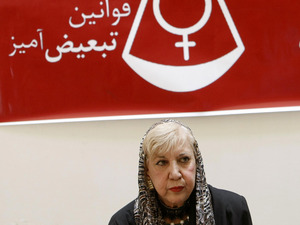I will never be ashamed to admit I was born in Austin, Texas.
Texas has produced great women such as Molly Ivins, Ann Richards, Barbara Jordan, and yours truly.
But, not so much this group:
http://www.huffingtonpost.com/2010/03/12/texas-education-board-app_n_497440.html
I understand that great education always relies on great educators, from all walks of life and perspectives. I was truly hoping and believing that the biased and limited textbook publications of the past were over. These were the textbooks that only tell the story of dead white guys, and even limited their purposes and intent. For example, the Texas Board of Education wants to include that all of our nation’s founding fathers were Christians. That’s fine. But will they also include that those same men intentionally and vehemently included separation of church and state, because they witnessed first hand the atrocities (inquisition, anyone?) perpetrated in the name of spiritual beliefs? I am more than doubtful; I fear they will use this knowledge to justify prayer in school, and THEIR style of prayer. (Sorry, Muslim students, you don’t get to participate?)
Textbooks need to include all the wonderful -ugly of history’s dirt, grit, mud, blood, triumphs, perseverance, and explanations of ideologies from many cultures and diffusion. Ask the BIG QUESTIONS, and give many points of access for students. Excluding a humanitarian because he isn’t as “famous” as Nelson Mandela just further exacerbates our “celebrity/culture cult” society.
But Texas, and those who are seeking more narrow-minded, closed, stunted thinking, think again. The good teachers will circumvent your cheesy choices and teach what needs to be taught. They will help all students navigate their way through difficult times, and find their own voices. When did that ever work? When did trying to stifle a perspective ever work out in history? When did throwing Christians to the lions ever stop their beliefs? When did persecuting one group ever extinguish the light of knowledge? Why not shine a light? (Or, in my more angry moments…go to the light!) Are you so afraid that the worst thing you’re going to uncover is your own ignorance?
Teach the BIG things: What happens in conflicts? What are multi-perspectives? What are primary, secondary and other forms of documentations of history that help us gain insight? And, most importantly of all:
How do we learn from our mistakes?
Texas Board of Education cuts Thomas Jefferson out of its textbooks.  The Texas Board of Education has been meeting this week to revise its social studies curriculum. During the past three days, “the board’s far-right faction wielded their power to shape lessons on the civil rights movement, the U.S. free enterprise system and hundreds of other topics”:
The Texas Board of Education has been meeting this week to revise its social studies curriculum. During the past three days, “the board’s far-right faction wielded their power to shape lessons on the civil rights movement, the U.S. free enterprise system and hundreds of other topics”:
– To avoid exposing students to “transvestites, transsexuals and who knows what else,” the Board struck the curriculum’s reference to “sex and gender as social constructs.”
– The Board removed Thomas Jefferson from the Texas curriculum, “replacing him with religious right icon John Calvin.”
– The Board refused to require that “students learn that the Constitution prevents the U.S. government from promoting one religion over all others.”
– The Board struck the word “democratic” from the description of the U.S. government, instead terming it a “constitutional republic.”


 The Texas Board of Education has been
The Texas Board of Education has been 
